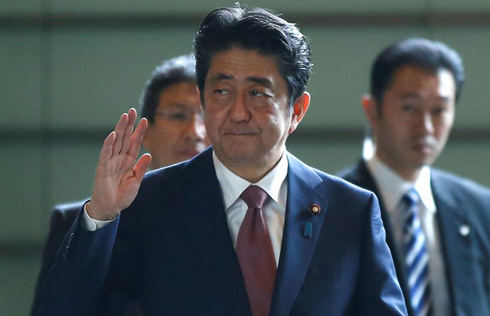Full text of facts and China's position concerning Indian border troops' crossing of China-India boundary
III
7. Since the incident broke out, India has invented various excuses to justify its illegal action, but its arguments have no factual or legal grounds at all and are simply untenable.
8. The China-India boundary in the Sikkim Sector has already been delimited, and the Dong Lang area is Chinese territory. China's road building on its own territory is aimed at improving local transportation, which is completely lawful and legitimate. China did not cross the boundary in its road building, and it notified India in advance in full reflection of China' s goodwill. The Indian border troops have flagrantly crossed the mutually-recognized boundary to intrude into the Chinese territory and violated China' s territorial sovereignty. This is indeed a real attempt to change the status quo of the boundary, and it has gravely undermined peace and tranquility of the China-India border area.
9. India has cited "serious security implications" of China's road building as a justification for its illegal crossing of the boundary. According to UN General Assembly Resolution 3314 adopted on 14 December 1974, no consideration of whatsoever nature, whether political, economic, military or otherwise, may serve as a justification for the invasion or attack by the armed forces of a State of the territory of another State. To cross a delimited boundary and enter the territory of a neighboring country on the grounds of so-called "security concerns", for whatever activities, runs counter to the basic principles of international law and basic norms governing international relations. No such attempt will be tolerated by any sovereign State, still less should it be the normal way of conduct between China and India as two neighboring States.
10. Over the years, Indian troops have constructed a large number of infrastructure facilities including roads at the Duo Ka La pass and its nearby areas on the Indian side of the boundary, and even built fortifications and other military installations on the boundary. China, on the contrary, has only had very little infrastructure built on its side of the boundary in the same sector. In recent years, Indian border troops have also obstructed the normal patrols along the boundary by Chinese border troops, and attempted to build military installations across the boundary. In response, Chinese border troops lodged repeated protests and took lawful actions to dismantle the facilities installed by the Indian military on the Chinese side of the boundary. The fact of the matter is it is India that has attempted time and again to change the status quo of the China-India boundary in the Sikkim Sector, which poses a grave security threat to China.
11. The 1890 Convention has made it abundantly clear that the China-India boundary in the Sikkim Sector commences at Mount Ji Mu Ma Zhen on the Bhutan frontier. Mount Ji Mu Ma Zhen is the eastern starting point of the China-India boundary in the Sikkim Sector and it is also the boundary tri-junction between China, India and Bhutan. The Indian border troops' trespass occurred at a place on the China-India boundary in the Sikkim Sector, which is more than 2,000 meters away from Mount Ji Mu Ma Zhen. Matters concerning the boundary tri-junction have nothing to do with this incident. India should respect the 1890 Convention and the eastern starting point of the China-India boundary in the Sikkim Sector as established by the Convention. It has no right to unilaterally alter the delimited boundary and its eastern starting point, still less should it violate China's territorial sovereignty on the basis of its untenable arguments.
12. The stability and inviolability of boundaries is a fundamental principle enshrined in international law. The China-India boundary in the Sikkim Sector as delimited by the 1890 Convention has been continuously valid and repeatedly reaffirmed by both the Chinese and Indian sides. Either side shall strictly abide by the boundary which shall not be violated. The Chinese and Indian sides have been in discussion on making the boundary in the Sikkim Sector an "early harvest" in the settlement of the entire boundary question during the meetings between the Special Representatives on the China-India Boundary Question. This is mainly in view of the following considerations. The boundary in the Sikkim Sector has long been delimited by the 1890 Convention, which was signed between then China and Great Britain. China and India ought to sign a new boundary convention in their own names to replace the 1890 Convention. This, however, in no way alters the nature of the boundary in the Sikkim Sector as having already been delimited.
13. The Dong Lang area has all along been part of China and under China's continuous and effective jurisdiction. There is no dispute in this regard. Since the 1980s, China and Bhutan, as two independent sovereign States, have been engaged in negotiations and consultations to resolve their boundary issue. The two sides have, so far, had 24 rounds of talks and reached broad consensus.Although the boundary is yet to be formally delimited, the two sides have conducted joint surveys in their border area and have basic consensus on the actual state of the border area and the alignment of their boundary. The China-Bhutan boundary issue is one between China and Bhutan. It has nothing to do with India. As a third party, India has no right to interfere in or impede the boundary talks between China and Bhutan, still less the right to make territorial claims on Bhutan's behalf. India's intrusion into the Chinese territory under the pretext of Bhutan has not only violated China's territorial sovereignty but also challenged Bhutan's sovereignty and independence. China and Bhutan are friendly neighbors. China has all along respected Bhutan's sovereignty and independence. Thanks to the joint efforts of both sides, the border area between China and Bhutan has always enjoyed peace and tranquility. China will continue to work with Bhutan to resolve the boundary issue between the two countries through negotiations and consultations in the absence of external interference.


























